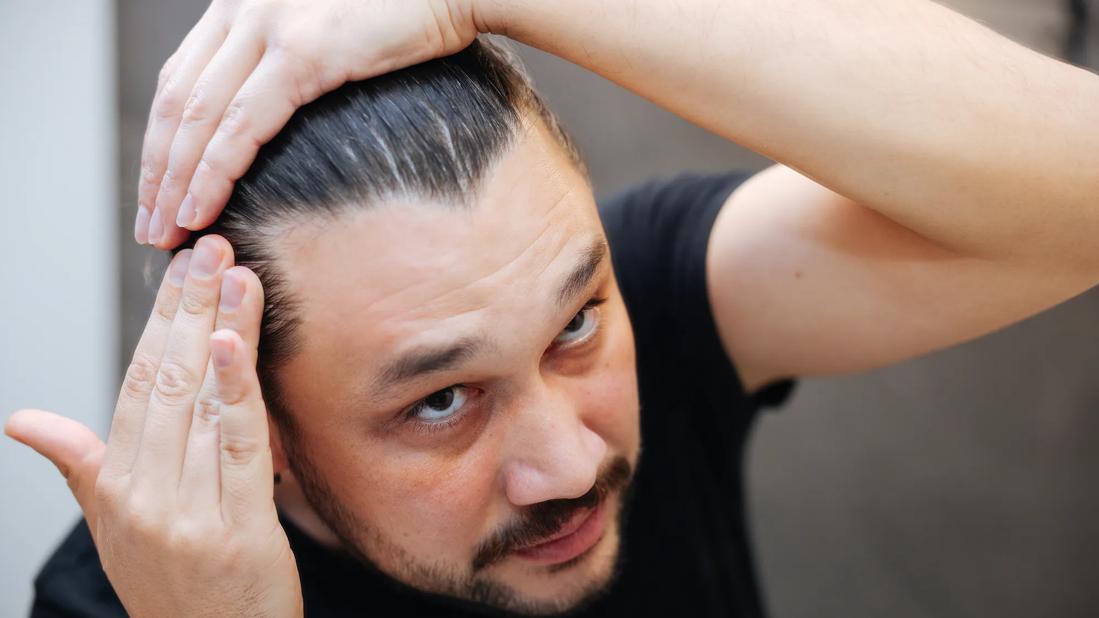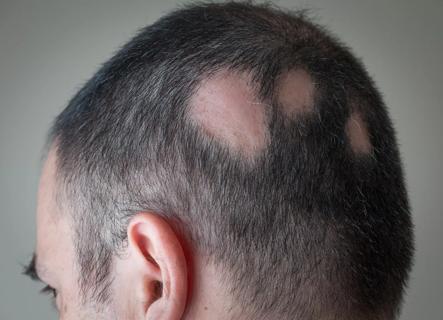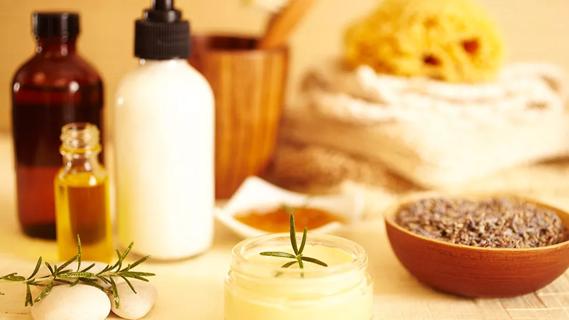Creatine does cause some side effects, but hair loss probably isn’t one of them

If you’re a serious athlete, weekend warrior or like to stay fit, you’ve likely heard of the supplement creatine. It’s a source of quick-acting energy that allows you to push your body harder, work out longer and recover faster. It all sounds great, but there are whispers that those benefits come at a cost: Your hair.
Advertisement
Cleveland Clinic is a non-profit academic medical center. Advertising on our site helps support our mission. We do not endorse non-Cleveland Clinic products or services. Policy
Registered dietitian Kate Patton, MEd, RD, CSSD, LD, discusses creatine’s effects — both good and bad. She unveils the truth about creatine and hair loss and shares what you need to know about other possible side effects of creatine.
Creatine helps you produce adenosine triphosphate (ATP) — the energy that keeps your muscles active. You get creatine from your diet and produce it in your liver, kidneys and pancreas.
“We get a pretty small amount of creatine from food, and your body can only produce a few grams daily,” Patton says. “When you supplement with creatine, your body stores it in your muscles before converting it to quick-acting energy, like what you need for bursts of exercise.” The recommended daily dose of creatine is 3 to 5 grams.
But don’t get creatine confused with anabolic steroids or protein. Creatine improves your ATP production, while steroids affect muscle growth.
Advertisement
The concern about creatine and hair loss stems from creatine’s effect on the hormone dihydrotestosterone (DHT). DHT is a byproduct of testosterone. It sticks to hair follicles and can eventually lead to hair loss. Some experts suggest that creatine may increase DHT.
A 2009 study of college rugby players reported a 56% increase in DHT after seven days of supplement loading (taking higher amounts of creatine). But no study has been able to recreate those results. Twelve additional studies have looked at the effects of creatine on testosterone. None have reported significant hormonal increases.
“If you’re concerned about your testosterone, talk to your primary care doctor or an endocrinologist before using creatine,” Patton advises. “But no conclusive evidence suggests that creatine increases testosterone or causes hair loss.”
Research about creatine is limited, and there’s no clinical evidence of negative side effects. But creatine can affect each person differently, and participants in some smaller studies have reported some side effects.
Suspected and reported side effects of creatine may include:
The most commonly reported side effect of creatine is water retention, especially during the first few days of use. Creatine is transported to the muscles with sodium (salt), which binds to water.
But experts haven’t proven that creatine increases the total amount of water in your body (relative to your muscle mass) in the long term. They suspect that as your muscle mass increases, your total body water also increases. But the ratio of muscle mass to total body water remains the same.
“Water retention is more common when people do a ‘loading phase’ with creatine — athletes may take a higher dose of creatine for several days to optimize performance,” Patton explains. “But if you take the recommended daily dose of creatine, you likely won’t notice water retention.”
In 1998, a case study of someone supplementing with creatine reported that it caused the person’s kidney health to deteriorate. Since then, researchers have studied the effects of creatine supplements on kidney function. They haven’t found negative effects associated with the recommended creatine dosage.
“There’s no conclusive evidence of kidney damage. But it’s still a good idea to avoid creatine if you have chronic kidney disease or renal dysfunction,” Patton states.
People typically use creatine during times of high-intensity exercise — that means sweating. There’s some concern that the combination of sweat and possible water retention in muscles may lead to dehydration and muscle cramping.
Advertisement
Some people report cramping and dehydration when they use creatine, but there’s no research-based evidence to prove it. On the contrary, some earlier studies of athletes found that creatine supplementation reduced cramping, sometimes by as much as 60%.
Talk to a healthcare provider before adding a supplement to your diet. Take only the recommended daily amount unless your provider instructs you otherwise.
As a supplement, creatine isn’t approved by the U.S. Food & Drug Administration (FDA). That means it’s not regulated for safety and effectiveness.
To ensure you’re using the best possible product on the market, Patton recommends using brands that are certified as safe. Independent, third-party testing companies such as the National Safety Foundation and Informed Choice evaluate products. They test supplements for banned substances and verify ingredients.
“If the creatine is third-party tested, it has a certification label on the product packaging,” Patton shares. “Safety certification offers some reassurance for products that the FDA doesn’t regulate.”
Advertisement
Learn more about our editorial process.
Advertisement

Take steps to reduce stress by practicing meditation, finding time to relax and maintaining a healthy lifestyle

You may see pitting, brittleness or ridges in your fingernails and toenails

Your immune system may attack hair follicles anywhere on your body

It’s normal to lose around 50 to 150 strands per day to routine hair shedding

Studies are mixed, but frequently wearing very tight, warm hats could stress your follicles and lead to hair loss

Things like stress, heated styling and other health conditions may cause you to lose more hair than normal

A gentle hair care routine, stress reduction and sun protection can help reduce flares and maintain your locks

Home remedies may help your hair, but don’t expect them to cure the autoimmune disease

The ‘sunshine vitamin’ is found naturally in some fish and is added to other foods

Autism and ADHD often go hand in hand, giving rise to the term AuDHD

The Yuzpe regimen is less effective than other forms of emergency contraceptives, and it’s associated with more side effects